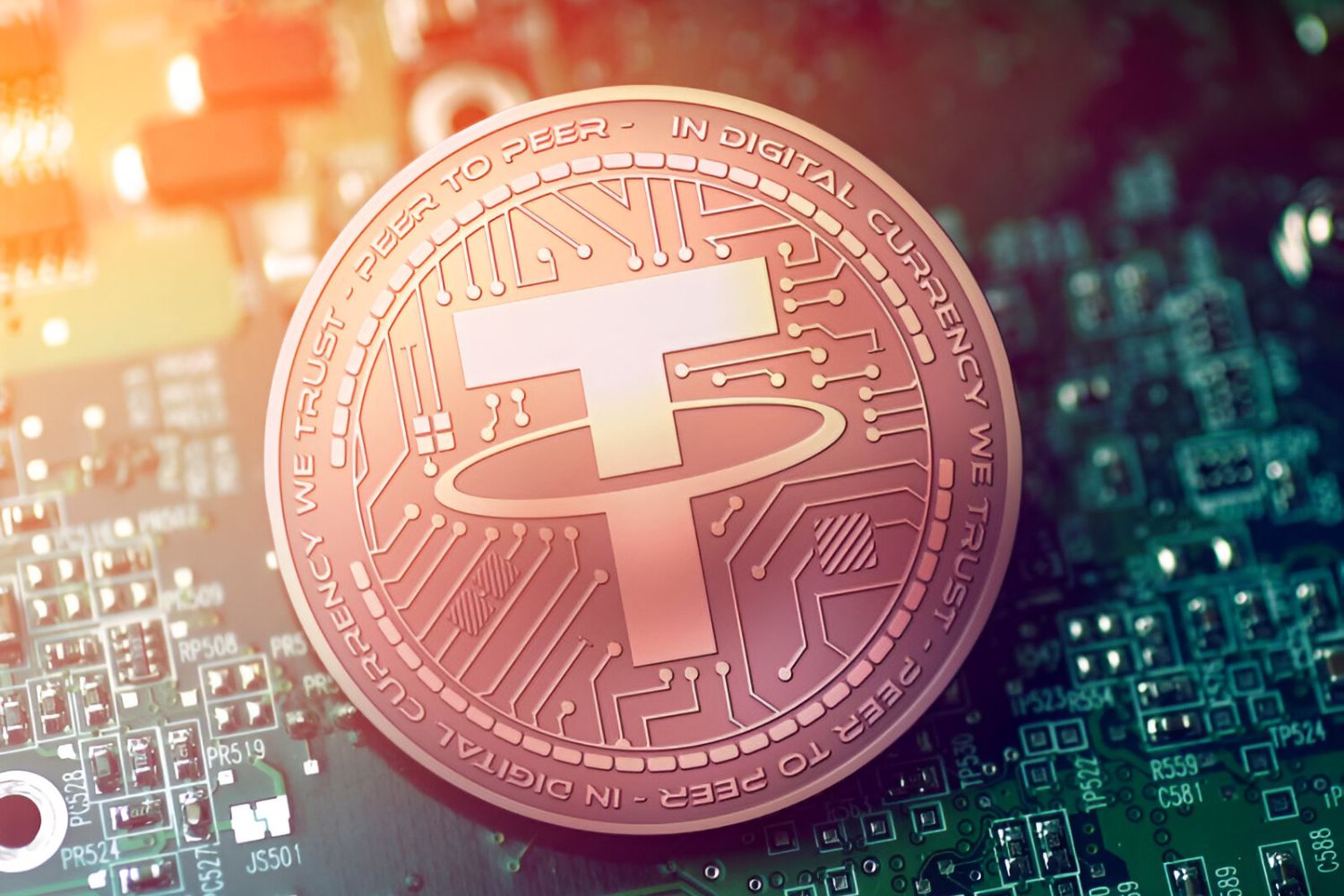Introduction
Welcome to the world of cryptocurrencies, where new concepts and terms are constantly emerging. One such term that has gained popularity in recent years is the “PEG.” If you’re new to the crypto space, you may be wondering, what exactly is a PEG and how does it relate to cryptocurrencies?
A PEG in the context of crypto refers to a mechanism used to stabilize the value of a digital asset by pegging it to another asset, typically a stablecoin or a fiat currency. The aim is to minimize the inherent volatility associated with cryptocurrencies and create a more stable trading environment.
As the crypto market can experience wild price swings within short periods, the concept of a PEG can be appealing to investors seeking a more predictable and reliable investment. By pegging a cryptocurrency to a stable asset, the value of the cryptocurrency can be stabilized, making it more suitable for everyday transactions and ensuring its long-term viability.
In this article, we will explore the ins and outs of PEGs in the crypto world, including how they work, the different types of PEGs, their advantages, challenges, and some examples of PEGs in action.
What is a PEG in Crypto?
In the world of cryptocurrencies, a PEG refers to a mechanism used to stabilize the value of a digital asset or cryptocurrency by pegging it to another asset. The goal is to mitigate the price volatility commonly associated with cryptocurrencies and create a more reliable and predictable trading environment.
A PEG works by establishing a fixed exchange rate between the cryptocurrency and a stable asset like a stablecoin or a fiat currency. This fixed rate helps in establishing and maintaining the value of the cryptocurrency, making it less susceptible to dramatic price fluctuations.
Essentially, a PEG acts as a virtual anchor, keeping the cryptocurrency’s value tethered to the stable asset. This allows users to confidently transact with the cryptocurrency without fear of sudden value changes, making it more practical for everyday use.
PEGs can be implemented through various mechanisms such as smart contracts, decentralized finance (DeFi) protocols, or centralized exchanges. The specific implementation method may vary depending on the project and the underlying technology utilized.
It’s important to note that while PEGs can help stabilize the value of a cryptocurrency, they are not without risks. Pegging a volatile asset to a stable one comes with its own set of challenges, including potential liquidity issues and the need for stringent monitoring and maintenance to ensure the peg remains intact.
In the next section, we will delve deeper into how a PEG works and the different types of PEGs commonly used in the crypto space.
How Does a PEG Work?
A PEG in the context of cryptocurrencies works by establishing a fixed exchange rate between a volatile digital asset and a stable asset. This helps to stabilize the value of the cryptocurrency, making it more attractive for users and investors.
Let’s say we have a cryptocurrency called XYZ and it is known for its high price volatility. To create a PEG for XYZ, a fixed exchange rate is set with a stable asset, such as a stablecoin like Tether (USDT) or a fiat currency like the US dollar. For example, if the current exchange rate for XYZ is 0.001 BTC, the PEG might set a fixed rate of 1 XYZ = 1 USD.
When the value of XYZ rises above the PEG rate, the PEG mechanism kicks in to bring the value back down. This is achieved by selling or issuing more XYZ tokens on the market, effectively increasing the supply and balancing the price. Conversely, if the value of XYZ drops below the PEG rate, the PEG mechanism buys back or redeems XYZ tokens, reducing the supply and increasing the price.
The underlying mechanism for maintaining the PEG may vary depending on the project and its design. In some cases, centralized control and intervention may be required to ensure the stability of the PEG. In other cases, decentralized mechanisms like smart contracts or algorithmic protocols may handle the PEG’s maintenance.
It’s important to note that the success of a PEG depends on several factors, such as the liquidity of the cryptocurrency, the strength of the stability mechanism, and the level of trust and confidence from users and investors. Regular audits and transparency in handling the stable asset reserves are also crucial to maintain the credibility of the PEG.
The stability provided by a PEG can have a range of benefits, including increased usability of the cryptocurrency for everyday transactions, reduced risk for businesses accepting the cryptocurrency as payment, and improved market confidence.
In the next section, we will explore the different types of PEGs commonly used in the crypto space.
Types of PEGs
There are several different types of PEGs that exist in the crypto world, each with its unique approach to stabilizing the value of a cryptocurrency. Here are some of the common types:
- Algorithmic PEGs: These PEGs rely on mathematical algorithms and smart contracts to maintain the stability of a cryptocurrency. They automatically adjust the supply and demand of the cryptocurrency based on market conditions, aiming to keep its value in line with the pegged asset.
- Centralized PEGs: In a centralized PEG, a central entity, such as a company or organization, controls and manages the stability mechanism. This entity could intervene directly in the market by buying or selling the cryptocurrency to maintain the peg. Examples of centralized PEGs include stablecoins like Tether (USDT) and USD Coin (USDC).
- Collateralized PEGs: A collateralized PEG has a reserve of assets that act as a backing for the cryptocurrency. These reserves are typically composed of stable assets, such as other cryptocurrencies or fiat currencies, ensuring that the cryptocurrency maintains its value. One popular example of a collateralized PEG is MakerDAO’s DAI, which is backed by a variety of collateral.
- Multi-Collateral PEGs: These PEGs go a step further by utilizing multiple collateral assets to stabilize the cryptocurrency’s value. This approach provides additional diversification and stability to the PEG mechanism, making it more resilient to market fluctuations.
- Oracle-based PEGs: Oracle-based PEGs rely on external data feeds or oracles to determine and verify the exchange rate between the cryptocurrency and the stable asset. These oracles provide real-time data and help ensure that the PEG remains accurate and up to date.
The choice of PEG type depends on various factors, including the project’s goals, the level of decentralization desired, and the specific requirements of the cryptocurrency ecosystem.
It’s worth noting that PEG implementations can combine multiple types, creating hybrid approaches that aim to address the limitations and challenges associated with a single type of PEG.
Now that we’ve explored the different types of PEGs, let’s delve into the advantages they offer.
Advantages of PEGs
PEGs bring a range of benefits to the world of cryptocurrencies and contribute to a more stable and reliable trading environment. Here are some advantages of implementing a PEG:
- Price Stability: The primary advantage of PEGs is the stabilization of the cryptocurrency’s value. By pegging the cryptocurrency to a stable asset, PEGs help limit the extreme price volatility often associated with cryptocurrencies, making them more suitable for everyday transactions and mitigating risk for both users and businesses.
- Increased Usability: The stability provided by PEGs enhances the usability of the cryptocurrency. Users can confidently hold and transact with the cryptocurrency, knowing that its value won’t fluctuate wildly. This makes it more attractive for everyday use case scenarios, such as payments, remittances, and even lending and borrowing within decentralized finance (DeFi) platforms.
- Market Confidence: PEGs can boost market confidence by offering a more reliable and predictable investment option. They attract risk-averse investors who may have been hesitant to enter the volatile crypto market. The stability provided by PEGs can increase trust and encourage wider adoption of cryptocurrencies.
- Reduced Counterparty Risk: With PEGs, the risk of counterparty default is significantly reduced. Since the cryptocurrency’s value is pegged to a stable asset, users don’t have to worry about sudden and significant depreciation. This reduces the counterparty risk associated with holding and transacting with cryptocurrencies.
- Global Accessibility: PEGs make cryptocurrencies more accessible globally, especially in regions where traditional banking infrastructure is limited. By offering a stable value for a cryptocurrency, PEGs enable individuals and businesses to participate in the digital economy without being exposed to the volatility of the local currency.
These advantages have made PEGs a popular concept in the crypto space, with various projects implementing different types of PEGs to stabilize their cryptocurrencies and attract a broader user base.
Now, let’s explore the challenges associated with PEGs.
Challenges of PEGs
While PEGs offer a range of benefits, they also come with their own set of challenges and considerations. Here are some of the primary challenges associated with PEGs:
- Liquidity: Maintaining sufficient liquidity is crucial for the stability of a PEG. If there is a lack of liquidity on the market, it can become difficult to buy or sell the cryptocurrency at the pegged rate, resulting in potential price deviations.
- Maintenance: PEGs require ongoing and careful monitoring to ensure the stability of the cryptocurrency. Regular audits and transparent handling of the reserves are essential to maintain trust and credibility in the PEG mechanism.
- Trust and Centralization: Centralized PEGs may raise concerns about the concentration of power and the potential for manipulation. Users need to trust the entity controlling the PEG mechanism to maintain the stability and integrity of the cryptocurrency.
- Price Disconnect: In extreme market conditions, PEGs may disconnect from their pegged assets. This can happen due to liquidity shortages, rapid price fluctuations, or external market events. In such cases, it can be challenging to restore the peg without significant intervention.
- Regulatory Challenges: PEGs, especially those involving stablecoins backed by fiat currencies, may face regulatory challenges in different jurisdictions. Compliance with regulatory frameworks can be a complex process, and changes in regulations can impact the stability and operations of PEGs.
Addressing these challenges requires careful design, transparency, and cooperation from all the stakeholders involved. The development and implementation of robust mechanisms and continuous improvement are essential for the long-term success of PEGs.
Despite these challenges, PEGs continue to evolve as a solution to stabilize cryptocurrencies and enhance their usability. Now, let’s take a look at some examples of PEGs in action.
Examples of PEGs in Crypto
PEGs have gained traction in the crypto space, and several projects have successfully implemented this mechanism to stabilize the value of their cryptocurrencies. Here are a few notable examples:
- DAI (MakerDAO): DAI is a decentralized stablecoin built on the Ethereum blockchain and governed by MakerDAO. It is collateralized by a variety of assets, including other cryptocurrencies. This multi-collateral approach helps maintain the stability of DAI by providing diversification and reducing reliance on a single asset.
- Havven (Synthetix): Havven is a decentralized payment network that offers a stablecoin called sUSD. The stability of sUSD is maintained through a system of collateralized assets and incentive mechanisms. It allows users to have exposure to stable value within the Ethereum ecosystem.
- UMA Protocol: UMA (Universal Market Access) is a decentralized protocol that enables the creation and customization of synthetic assets. The protocol offers a mechanism called “priceless” to maintain the value of synthetic assets by incentivizing participants to act as validators and provide collateral to back the assets.
- Ampleforth: Ampleforth is a cryptocurrency that aims to provide a stable store of value by using an algorithmic approach. It adjusts the supply of Ampleforth tokens based on market conditions, aiming to maintain a stable price of approximately one US dollar using the concept of a rebase mechanism.
- Reserve Protocol: The Reserve Protocol is designed to create a decentralized stablecoin called RSV that is backed by a basket of assets. This collateralization mechanism helps maintain the stability of RSV and allows it to track the value of fiat currencies, making it suitable for everyday transactions.
These examples illustrate the diversity of approaches taken to implement PEGs in the crypto space. Each project has its unique way of addressing the challenges of stability and volatility, catering to different user needs and preferences.
It’s important to research and understand the specific mechanisms and dynamics of each PEG implementation before engaging with them. Additionally, as the crypto space continues to evolve, new projects and innovations in the realm of PEGs are expected to emerge.
Now, let’s summarize what we’ve covered so far.
Conclusion
PEGs play a significant role in stabilizing the value of cryptocurrencies and enhancing their usability. By pegging a cryptocurrency to a stable asset, PEGs aim to mitigate the price volatility that often plagues the crypto market, making cryptocurrencies more practical for everyday transactions and attractive to a wider range of users.
We explored the concept of PEGs, understanding how they work by establishing a fixed exchange rate between a cryptocurrency and a stable asset. We learned about different types of PEGs, including algorithmic PEGs, centralized PEGs, collateralized PEGs, multi-collateral PEGs, and oracle-based PEGs.
PEGs offer several advantages, including price stability, increased usability, market confidence, reduced counterparty risk, and global accessibility. However, they also come with challenges such as liquidity management, maintenance, trust, price disconnects, and regulatory considerations.
Examining examples of PEGs in action, we discovered projects like DAI, Havven, UMA Protocol, Ampleforth, and the Reserve Protocol, each employing different strategies to maintain stability and enhance the usability of their respective cryptocurrencies.
As the crypto space continues to evolve, the concept of PEGs will likely continue to gain prominence, offering solutions to the inherent volatility of cryptocurrencies. It is important for users and investors to understand the specific mechanisms and risks associated with each PEG implementation before engaging with them.
Ultimately, PEGs contribute to the growth and maturation of the crypto landscape, providing stability and expanding the possibilities of digital currencies in various industries and use cases.
So, whether you’re a newcomer to the crypto world or an experienced investor, understanding PEGs and their impact is crucial for navigating and participating in the exciting and ever-changing world of cryptocurrencies.

























